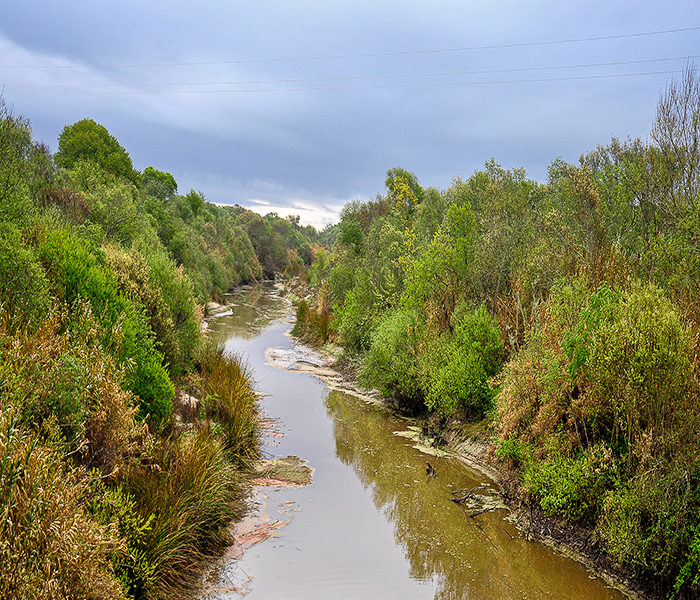The Salinas River, known fondly as the “upside down river,” is the longest underground river in the country, flowing both above and below ground for about 175 miles from its headwaters in the Los Padres National Forest to the Monterey Bay Marine Sanctuary.
I’ve stood on every bridge in the Salinas Valley that crosses this river, captivated by its allure. I’ve explored the tributaries that feed it, ambled along its banks and wiggled my toes in the sand where it meets Monterey Bay. I’ve seen it lush and green in spring, bone dry in summer, slow-moving in fall and dark and grey in winter. I am never disappointed and always delighted by the meandering mark it leaves as it flows northwesterly toward the Pacific Ocean.
John Muir, famous for his rapturous perspective of the outdoors noted that, “Rivers flow not past, but through us; tingling, vibrating, exciting every cell and fiber in our bodies, making them sing and glide.”
He’s so right.
A river represents so much more than just its water flow. It’s a mixture of habitats, a source of energy, a home for wildlife, a wellspring of enjoyment and here, in the Salinas Valley, our river is the lifeblood for more than one million acres of farmland.
In its earliest existence, millenniums ago, the Salinas wasn’t a river at all, but a commingling of water droplets, part of an enormous sea that covered much of northwestern California. As the Santa Lucia and Gabilan mountains formed, not as many millenniums ago, the Salinas Valley began to take shape. Time passed. Erosion, drainage, rising temperatures all coalesced to shape the evolution of our river.
When the earliest peoples arrived about 10,000 years ago, the Salinas Valley was a patchwork of marshes and sloughs, vast grasslands and a slow-moving river that met the ocean in a salty quagmire, creating a jumble of lagoons that, as they shriveled in the summer heat, dried up leaving a coating of salt. That was the beginning of the nomenclature for the town to come. Salinas more or less translates to salt marsh.
The Ohlone, descendants of those first people, occupied the Salinas Valley for several thousands of years, making the most of the lush wetlands as hunter-gatherers, using the native grasses to create bee hive shaped huts, the abundant cottonwoods as fuel and harvesting acorns from the native oaks.
It wasn’t until 1769 when Spanish Captain Gaspar de Portola launched the first land expedition to traverse California in search of the bay General Sebastian Vizcaino described in 1602 that the river, snaking through the Salinas Plain, got its first moniker. He and his expedition were the first white men to lay eyes on it.
Portola named it the Rio San Elziario. Before cartographers settled on the name Salinas River in the 1860s, it was also known as Rio San Delfina, Rio del Monterey, Rio Santa Buenaventura and Rio Salinas. Along with the Spanish came Franciscan padres, architects of the mission system, which set in motion the commandeering of native land, culture and religion. The river was unscathed, but life changed dramatically for the peaceful people who had flourished on its banks.
The river, though, had a secret life that only the Native Indians, who had lived in harmony with it for centuries, understood — it was ungovernable. Cycles of flooding and drought made the river destructive and undependable. As the river flowed, fortunes were made and lost. But that didn’t stop ranchers and farmers from trying to tame it, control it, bend it to their will.
Only natural forces could make that happen. In 1906, the earthquake that rocked San Francisco diverted the river six miles south from its original outlet, cutting a new channel north of Marina.
What a reminder about the formidable forces that govern our planet. Nature’s hidden power is found in its yin and yang temperament, the symmetry of strength and surrender is the essence of its resilience.
The irrepressible Salinas River is, indeed, resilient. Its course has been changed, dams have impeded its flow, irrigation has siphoned off its water, drought has impacted its effectiveness, flooding its bearing and yet it, with quiet solemnity, drifts along.




